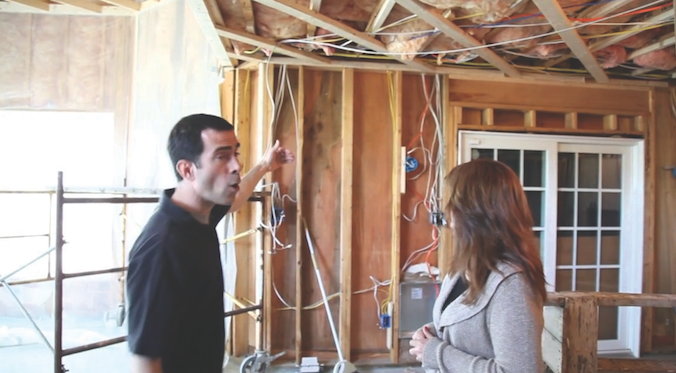The internet is, arguably, the single most important forum for public opinion today. Social media are often the first place people turn—outside of friends and family—when they want to give or get an opinion on just about anything.
A study by digital advertising agencies Dimensional Research and Zendesk found that 88 percent of consumers polled said their buying decisions were influenced by online customer service reviews. Indeed, consumer reviews are significantly more trusted—nearly 12 times more—than descriptions that originate from the providers of a product or service, according to another survey by Expo, a video review site. Remember Millennials, the huge population group that home builders hope will mature into the next big pool of home buyers. Over half of 18-to-34 year olds polled by Bazaarvoice, a social media and marketing consultancy, said they trusted the online opinions of strangers more than those of their friends and family.
Among the content these home shoppers will see—besides the glamour shots of new houses on the builder's portfolio Web page—will be rants, valid or not, from irate customers on RipOffReport.com, PissedConsumer.com, and Yelp. Also just a first page of search results away are YouTube videos featuring disgruntled homeowners documenting their builder's shoddy work with walkthrough tours showing ceilings damaged by leaking roofs, pitched floors, and mushrooms growing between a stud and the OSB.
The internet has handed angry consumers a megaphone that is heard around the world, and the traditional tools of defense—polite denials, form letters with apology, PR spin—are essentially useless. If home builders, like any company, are caught in the crosshairs of a wrathful consumer going digital, they'll need a cohesive strategy to deal with that complaint directly and quickly.
The Voice of the People for Better or Worse
Gone are the days when review and analysis of everything from world events to pop culture belonged solely to the professionals seen in newspapers and on television. "Now for one movie, instead of getting one guy's response—who at least has enough credibility to say what's good or what's not—you go on Rotten Tomatoes or any other review site, and it's so filled with varied opinion that how could I possibly know what's meaningful anymore," says Jim Kane, a relationship marketing consultant and expert on consumer loyalty.

But if no one is an authority anymore, why do we trust the word of the average internet user? One reason is people identify more with our fellow man than a corporate entity, says Shel Holtz, a communications consultant and principal for Holtz Communication + Technology, a San Francisco marketing communications firm whose clients include PepsiCo and Pratt & Whitney. "We tend to trust other people just like us," Holtz says. "Even for the news, we want to hear from the people on the ground about what's happening."
Essentially what's happened is a power shift from businesses to consumers, says Scott Schang, branch manager for Broadview Mortgage, Orange, Calif., and a frequent blogger about mortgage news and home-buying strategies for consumers. "It's not that we're being found online anymore, but that we're being researched. We're not in the driver's seat; we're standing up against the wall hoping that we get picked for the team."
Hiding in Plain Sight
While everyone and anyone can have a voice online, the fact is that we don't always know to whom the voice belongs. Hundreds of users leave comments and reviews anonymously everyday. If one of those is a poor review and is directed at your company, how do you respond? Generally, Kane says, you cannot. If the people don't identify themselves, you have no information from which to build a response.
The main thing to consider when dealing with anonymous commenters is their credibility. One disgruntled customer, while unfortunate, usually won't have much influence over other readers. If a few start to show up, however, you might want to start paying attention.
As Holtz notes, anonymity does not override the credibility of the overall rating. So even if there are a few anonymous reviews in the bunch, the overall rating can still be trusted.
The thing you're most concerned about is are other people taking this seriously, and are they not going to hire me because they read this piece," Kane adds.
So if an anonymous review is less credible than one where the commenter is clearly identified, why do those lashing out often choose to remain nameless? Kane calls it a defense mechanism. "We're risk-averse, and the risk in this case is our reputation," he says. "We don't want to say this is the experience I had because you never quite know what force you're up against. And there's the possibility that maybe I was the problem."
There is a scenario in which these types of reviews can become a problem: if they are the first and/or only review that shows up in the search results. In the reader's eyes, Kane says, this raises a huge red flag because most people searching for reviews are looking to have their initial impression confirmed or denied—whether they realize it or not.
If I'm out looking for that, that means I'm not sure of my own instincts about a contractor," Kane says. "So the minute I see someone saying this was the worst, I'm done and moving on. I'm not even going to consider [that contractor]."
A Blessing in Disguise
Pushing the Bad Aside
Negative and embarrassing content can never be scrubbed off the internet. It's there forever. But those bad reviews can be pushed off the first couple pages of search engine results, which can help shape the first impressions of consumers researching your company.
The tactic is called search engine optimization (SEO). It's a practice that reputation management companies, PR firms, and social media consultancies use to help clients have their best face pop-up ahead of the bad stuff on search engine results. Basically, they flood the internet with new and positive stories and content about your company. Those pages are linked to other websites, such as Facebook and Twitter, with positive or neutral content about your company. The goal is to have the good stuff rank ahead of the bad stuff, so the search engines post the positive content among the first 10-to-20 listings of search engine results.
The turnaround does take time and depends on the strength of the negative search results about your company, how aggressive the positive campaign needs to be, and how much positive content is needed. Some words of caution: plagiarism is bad, unique and original content is better. Early reputation management efforts included hiring bloggers to manufacture glowing content about their clients. Consumers are sophisticated enough to see through this façade, and it will backfire. Also Google frowns upon and will block pages that use SEO tricks like hidden links and affiliated websites that use cookie-cutter content to raise the number of back linked websites.
No one enjoys hearing bad things said about his or her business, especially in a public forum. But believe it or not, a bad review of your company can ultimately be a boon, as they may reveal aspects of your business that genuinely need fixing.
Schang relates the story of a customer who didn't qualify for a loan from Broadview and subsequently missed out on a credit offered by the federal government. To make matters worse, the customer was never removed from Broadview's quarterly mailing list and kept receiving flyers from the company despite repeated phone calls to the corporate office. Schang didn't find out about the oversight until almost two years later when the customer left a scathing online review of the company.
Schang posted a short response immediately, apologizing on behalf of the company and invited the customer to contact him directly to discuss the issue further. The key, he says, is to recognize and acknowledge the opportunity for improvement.
"Don't have a battle with the person online. That just makes you look bad," he adds.
Holtz recalls a hospital he worked with that was getting a string of poor reviews from dissatisfied patients. The hospital responded to the patients via social media, inviting them to call and follow-up on their complaints. As a result, several issues were resolved over the phone to the patients' satisfaction, but "in other cases you never hear anything back," Holtz says. "But that's OK because your response is sitting out there and people can see that you tried to resolve the issue."
Share the Love
While being able to do damage control is essential, you can preemptively counter any bad reviews that might come your way if you can pile up the glowing comments. This task can be as simple as asking clients to post their thoughts at the completion of a project. According to Holtz, research even shows that people are more inclined to leave reviews when they're really happy about something as opposed to when they're upset.
Broadview Mortgage has gone so far as to create a profile page on its website for each of its loan officers, where clients are encouraged to leave comments, post evaluations, and even leave video messages. "Some of our people, that's the only reference you'll find to them online, so when you Google their name, that page comes up," Schang says.
At the same time, you don't want to try to stack the deck grossly in your favor and completely bury any and all poor reviews. "The reviews have to be genuine because the consumer's ability to sniff out a scam is finely tuned," Schang says.
On the whole, he has found that clients who have read online reviews before meeting with a loan officer actually make for a better experience. "There's no sales process with people who have already done their homework and they have fewer questions," he says. "The trust bridge has already been built."
"This is the de facto way people want to interact with organizations," Holtz says. "It's become an expectation to get responses to comments and questions, and it's a much more efficient channel for doing so."









